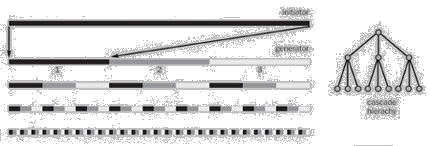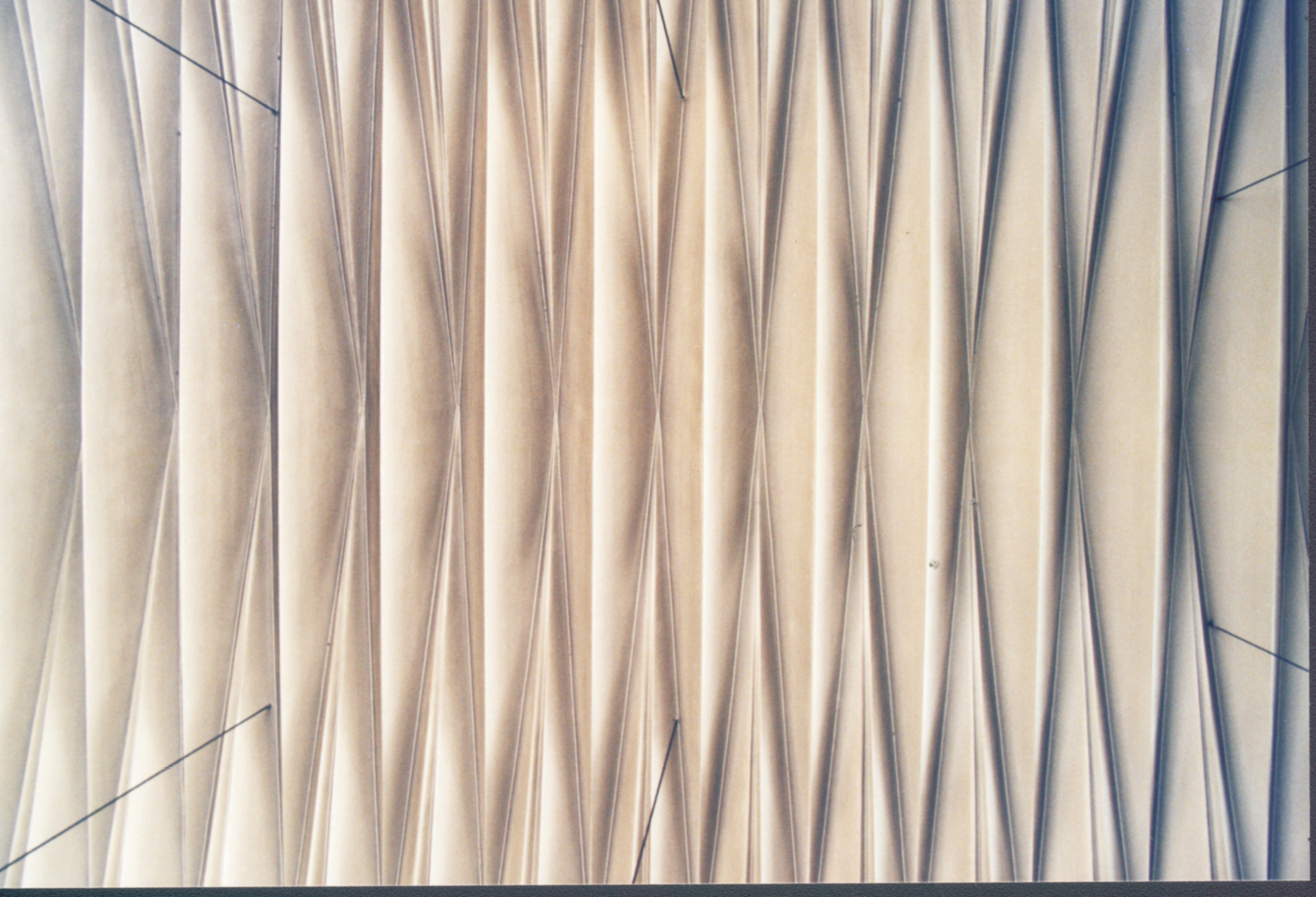4.2.1 Self-Similarity Dimension "Ds"
The self-similarity dimension “Ds” is equivalent to Mandelbrot's fractal dimension “D”. It proceeds from the fact that in a self-similarity construction there exists a relationship between the scaling factor and the number of smaller pieces that the original construction is divided into[01]. This is true for fractal and non-fractal structures: e.g. a line, as an example for a non-fractal structure, can be divided into three identical parts. In this case the number of new pieces “a” is three and the reduction factor “s” is one third, see picture 23. The dimension “Ds” results from the equation:
![]()
a ... number of pieces
s ... reduction factor
Ds ... fractal dimension
![]() =>
=> ![]()
means Ds=1 in the case of a line

 , with
, with  and “s” being the number of pieces respectively the reduction-factor of the generator and “n” being the number of iterations. If the starting line has the unit length of one, the first iteration amounts to a total length of
and “s” being the number of pieces respectively the reduction-factor of the generator and “n” being the number of iterations. If the starting line has the unit length of one, the first iteration amounts to a total length of  and the second iteration to
and the second iteration to  , which leads to the conclusion that in contrast to fractal curves there is no increase in length.
, which leads to the conclusion that in contrast to fractal curves there is no increase in length.


 ... number of pieces of the 1st scale=4
... number of pieces of the 1st scale=4 ... number of pieces of the 2nd scale=16
... number of pieces of the 2nd scale=16 ... reduction factor of the 1st scale=1/3
... reduction factor of the 1st scale=1/3 ... reduction factor of the 2nd scale=1/9
... reduction factor of the 2nd scale=1/9










